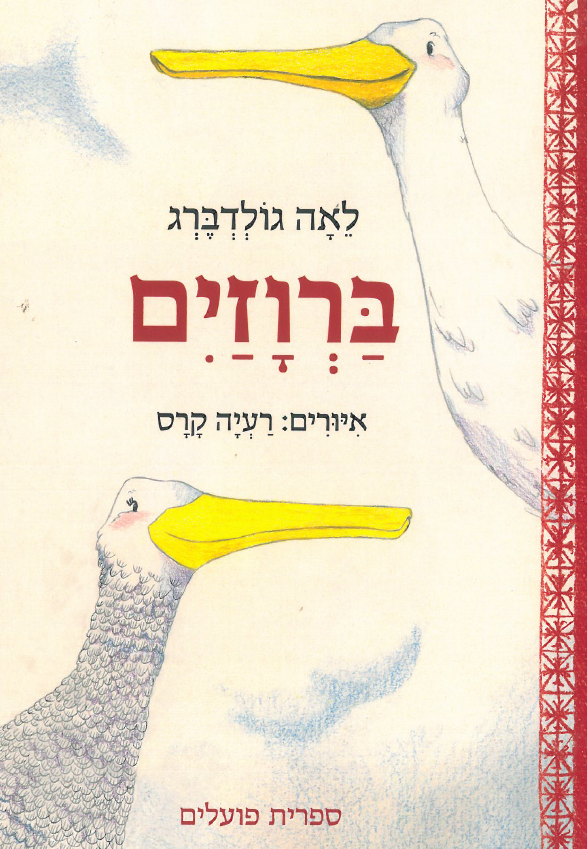
The song Two Ducks (Barvazayim) has been delighting generations of infants in Israel since the 1950s. In just a few words and some simple rhymes the song describes the relationship between Ephraim’s grandmother and a pair of fun-loving ducks. The two ducks compare the length of their necks, play hide-and-seek with Grandma, and squirt water on one another. The book invites parents and children alike to enjoy reading it, looking at the illustrations and singing finger-play songs together.




